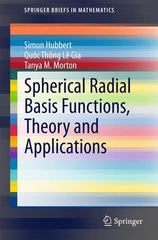PLS HELP ME WITH THE 3 PROBLEMS (ANNUITY)
Annuity is a series of equal payments at regular intervals. Literally, annuity means payment made annually. But it can also refer to payment made at different segmental payment period. Classification of Annuity based on the Interest Period and Payment Interval 1. Simple Annuity - is an annuity where the payment interval coincides with the interest conversion period. For example, P10,000 invested at the end of every six months for 2 years and that 15% interest is paid compounded semiannually. 2. General Annuity - is an annuity where the payment interval does not coincide with the interest conversion period. For example, every 3 months, a father deposited P15,000 in a trust fund for the son's education for 8 years. The money earns 12% compounded monthly. The payment period is not equal to the interest period. Classification of Annuity based on Payment Schedule 1. Annuity Due - is an annuity that is paid or received at the beginning of the time period. 2. Ordinary Annuity - is an annuity that is paid or received at the end of a time period. 3. Deferred Annuity - the periodic payment is not made at the beginning nor at the end of each payment interval, but at some later date.FORMULA GENERAL ORDINARY ANNUITY Future Value of Present Value of General Ordinary Annuity General Ordinary Annuity 1 + in -1 1 - (1+i)-n FV = P PV = P (1 + i)k - 1) (1 + i)k - 1 where P = Regular Payment i = interest rate per compounding period r - annual rate where i= it - number of conversion periods in a year n = m . t = total number of conversion periods t - number of years k =e p - number of months in payable interval c -+ number of months in compounding periodFORMULA SIMPLE ANNUITY DUE Future Value of Simple Annuity Due Present Value of Simple Annuity Due FV = P(1+ i) (1 + i)" - 1] PV = P(1+ i) 1 - (1 + i) where FV = Future Value or Amount where PV = Present Value or Amount p - Periodic Payment p - Periodic Payment i = interest rate per period i = interest rate per period " + annual rate where i= It - number of conversion periods in a year m = 12-month m = 4-quarter m = 2-semiannual m = 1-year n = m . t = total number of conversion periods t - number of years. How much money is accumulated if F5,BDU is paid at the end of every month for 4 years at 5% compounded quarterly? . Find the present value of an annuity P1 [LOGO payable at the end of each quarter for 5 years if the rate of interest is 10% compounded monthly. . Find the future value given the situation of item number 4. FORMULA SIMPLE ORDINARY ANNUITY Future Value of Simple Ordinary Annuity Present Value of Simple Ordinary Annuity (1 + i)" - 1] 1 - (1+ i) -n FV = P PV = P where FV = Future Value or Amount where PV = Present Value or Amount P = Periodic Payment p = Periodic Payment { = interest rate per period i = interest rate per period r - annual rate where i= it - number of conversion periods in a year m = 12-month m = 4-quarter m = 2-semiannual m = 1-year 1 = m . t = total number of conversion periods t - number of years











